How To Hard Reset Iphone 12 Pro Max
Apple's iPhone 12 mini, iPhone 12, iPhone 12 Pro, and iPhone 12 Pro Max come in different sizes compared to last year's iPhone 11 series, but they still share some common design elements with Apple's 2019 models, such as an all-screen design and no Home button on the front.
Video tutorial on how to hard reset or force restart your iPhone 12:
If you're upgrading from a device with a Home button, keep reading to learn how to power on and off, force a restart, enter DFU mode, enter recovery mode, activate Emergency SOS, and temporarily disable Face ID. Below you'll find step-by-step guides for performing the button combinations of all of the above functions, along with explanations of what the more obscure ones do and why they might one day come in useful.
How to Hard Reset the iPhone 12 (All models)
- Quickly press and release the Volume Up button.
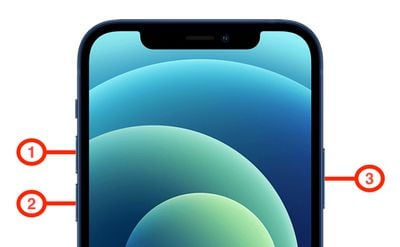
- Quickly press and release the Volume Down button.
- Press and hold the Side button until the Apple logo appears, then release the Side button.
During this process, you will see a slider to power off the iPhone. You're going to want to ignore it and continue holding down the Side button until the screen goes black. At that point, the Apple logo will pop up, and after the restart is complete, the screen will activate once again.
Using the force restart process prevents you from having to shut the iPhone down entirely, which takes several more steps.
If you do want to shut the iPhone down, you can do so by going to the General section of the Settings app, scrolling down to the bottom, and choosing the Shut Down option.
iPhone 12 Button Basics
Apple changed many of the physical button functions on its smartphones with the launch of the iPhone 8 and iPhone X, so if you're upgrading from a device that pre-dates these 2017 models, you'll want to familiarize yourself with them.
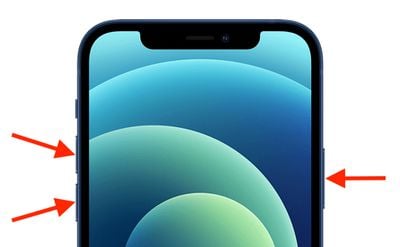
Face the screen of your new iPhone and you'll see that there are two volume buttons on the left-hand side, and a single Side button on the right-hand side. With no Home button to speak of, these three side buttons work in combination to undertake all of the necessary functions.
Other Useful Things to Know
- How to Turn On iPhone 12 Models
- How to Turn Off iPhone 12 Models
- How to Activate Emergency SOS on iPhone 12 Models
- How to Disable Face ID on iPhone 12 Models
- How to Enter Recovery Mode on iPhone 12 Models
- How to Exit Recovery Mode on iPhone 12 Models
- How to Enter DFU Mode on iPhone 12 Models
- How to Exit DFU Mode on iPhone 12 Models
How to Power on iPhone 12 mini, iPhone 12, iPhone 12 Pro, and iPhone 12 Pro Max
To turn on your new iPhone, press the Side button once. If the Apple logo doesn't appear on the screen, the device may need charging – plug it into a power outlet using the supplied Lightning cable, and let it charge for at least a few minutes before trying again.
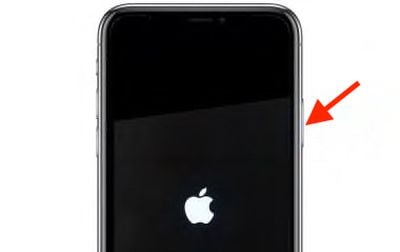
Press and hold the Side button along with the Volume Up or Volume Down button until two sliding buttons appear on the screen.
How to Power off iPhone 12 mini, iPhone 12, iPhone 12 Pro, and iPhone 12 Pro Max

- Press and hold the Side button along with the Volume Up or Volume Down button until two sliding buttons appear on the screen.
- Release the physical buttons and swipe right on the slide to power off button at the top of the screen.
How to Activate Emergency SOS on iPhone 12 mini, iPhone 12, iPhone 12 Pro, and iPhone 12 Pro Max
Activating Emergency SOS on your iPhone automatically calls emergency services and sends a text message with your location information to the people in your emergency contacts. For this reason, you should only use it when you're in danger or facing a genuine emergency. Note that you'll need to enter your iPhone's passcode to reenable Face ID and unlock your iPhone after performing Emergency SOS.
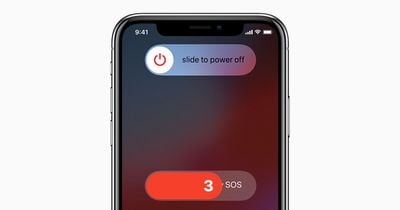
- Press and hold the Side button as well as either one of the Volume buttons, so that you're essentially squeezing either side of the device.
- Keep squeezing until the Emergency SOS countdown initiates on the screen. You can either wait for the countdown to finish or slide it across to call the emergency services immediately and alert your emergency contacts.
If you don't want Emergency SOS to automatically call emergency services when the Side button is pressed, make sure to disable Auto Call via Settings -> Emergency SOS -> Disable Auto Call.
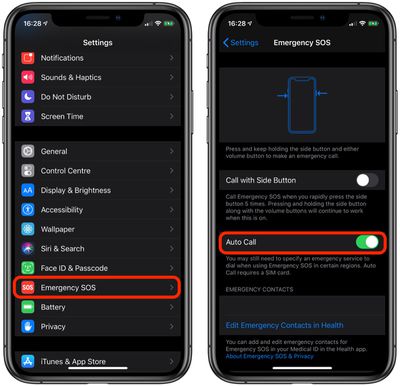
How to Disable Face ID on iPhone 12 mini, iPhone 12, iPhone 12 Pro, and iPhone 12 Pro Max
Disabling Face ID on your iPhone makes it so your passcode has to be entered to unlock it. By disabling facial authentication, a police officer or malicious person can't unlock your iPhone simply by holding it in front of your face.

- Press and hold the Side button.
- Press and hold either Volume button.
- Tap the Cancel button that appears at the bottom of the screen.
Troubleshooting Functions
Apple changed the process of activating the following troubleshooting functions with the launch of the iPhone 8 and iPhone X, so if you upgraded from a device that pre-dates these 2017 models, it's a good idea to familiarize yourself with them in case you run into problems.
How to Enter Recovery Mode on iPhone 12 mini, iPhone 12, iPhone 12 Pro, and iPhone 12 Pro Max
Entering recovery mode can help if you're having trouble updating or restoring your iPhone over the air. For example, if the screen shows the Apple logo for several minutes but no progress bar appears, you can try putting the device in recovery mode and restoring it with iTunes. Here's how it works.
- Using the Lightning cable that came with your iPhone, connect the device to your computer. If you're using a Mac running macOS Mojave or earlier, or you're connecting to a PC, make sure you have the latest version of iTunes installed.
- On a Mac running macOS Catalina or later, open Finder. On a Mac with macOS Mojave or earlier, or on a PC, open iTunes. If iTunes is already open, close it, then open it again.
- With the iPhone connected, force restart it with the following steps, but don't release the buttons when you see the Apple logo. Instead, wait until the recovery mode screen appears.
- Press and quickly release the Volume Up button.
- Press and quickly release the Volume Down button.
- Press and hold the Side button until you see the recovery mode screen, then release it.
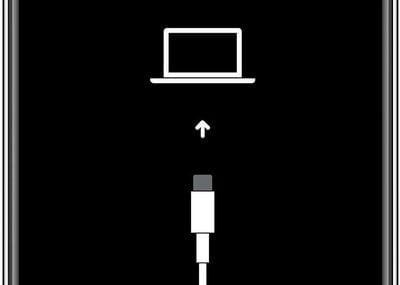
- If you're using iTunes, select your device in the iTunes sidebar. Otherwise, select your device in the Finder sidebar.
- When you see the option to Restore or Update, choose Update. Your computer will try to reinstall the software without erasing your data. Wait while your computer downloads the software for your device.
How to Exit Recovery Mode on iPhone 12 mini, iPhone 12, iPhone 12 Pro, and iPhone 12 Pro Max
Simply press and hold the Side button until the "Connect to iTunes" screen disappears, and your iPhone should reboot back into iOS.
How to Enter DFU Mode on iPhone 12 mini, iPhone 12, iPhone 12 Pro, and iPhone 12 Pro Max
The forced restart procedure described above can help if an iPhone is freezing, throwing up errors, or has stopped responding completely. DFU mode (standing for Device Firmware Update) on the other hand restores an iPhone if a restart or entering standard Recovery Mode doesn't solve the problem you're experiencing.
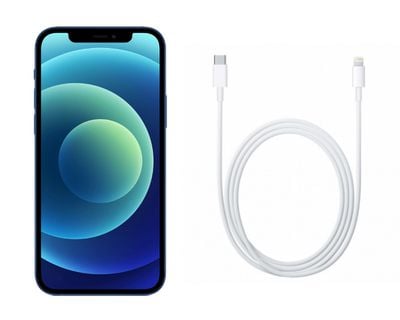
DFU mode lets the device interface with Finder or iTunes, update the firmware, and restore the OS without automatically installing the last downloaded version. It's useful for installing older versions of iOS if a beta persistently hangs your phone, or if a jailbreak goes bad.
Before following the steps below, make sure you have the latest version of iTunes installed on your computer.
- Turn on your iPhone if it isn't already.
- Connect it to your computer using a Lightning to USB cable.
- On Macs running macOS Mojave or earlier and PCs, make sure that iTunes is running. On Macs running macOS Catalina or later, make sure Finder is running.
- On your iPhone, press the Volume Up button immediately followed by the Volume Down button.
- Next, press and hold the Side button (or power button) until your iPhone's screen turns black.
- Release the Side button and then hold down both the Side button and Volume Down button together for approximately five seconds.
- Now release the Side button, but continue to press the Volume Down button.
- Wait for at least five seconds for Finder or iTunes to recognize DFU recovery mode has been enabled.
If you're using iTunes, you should see a message dialog saying "iTunes has detected an iPhone in recovery mode. You must restore this iPhone before it can be used with iTunes". If you're using Finder, you should see a similar message. If you don't see the message, repeat the steps above.
Once you've closed the recovery prompt you can go ahead and restore your iPhone back to factory settings by selecting Restore iPhone on the iPhone Recovery Mode screen. Once restored, your iPhone will automatically exit out of DFU mode and boot up to its activation screen.
How to Exit DFU Mode
If you enabled DFU mode and want to manually exit out of it, here's how it's done.
- Press the Volume Up button on your iPhone and quickly release it.
- Press the Volume Down button and release it.
- Press and hold the Side button until the Apple logo appears on your iPhone's screen.
Your iPhone should now have exited DFU recovery mode.
Related Stories
iOS 14.5: How to Recalibrate Your iPhone 11 Battery
Tuesday April 27, 2021 9:03 am PDT by Tim Hardwick
With the release of iOS 14.5, Apple introduced a new process for recalibrating the battery health reporting on the iPhone 11, 11 Pro, and 11 Pro Max. The update recalibrates the maximum battery capacity and peak performance capacity on iPhone 11 models to address inaccurate estimates of battery health reporting that some users have encountered. Symptoms of this bug include...
Apple TV: How to Scrub Through Video Using the New Siri Remote (2nd Gen)
With the new Apple TV 4K now in customers' hands, some users are reporting issues when trying to control video with the redesigned Siri Remote. Specifically, some users are complaining that using the circular gesture on the new clickpad ring to fast-forward or rewind paused video isn't working as expected. Rather than scrubbing through video continually in the direction of the gesture, the...
How to Use Apple TV's iPhone-Based Color Balance Feature
Friday April 23, 2021 2:48 pm PDT by Tim Hardwick
In April, Apple introduced an iPhone-based color balance feature for Apple TV that can improve the overall picture quality of your television set when you're using Apple's set-top box. Using the iPhone's light sensor, the feature compares the color balance to industry-standard specifications, and automatically adjusts your Apple TV's video output to deliver more accurate colors and improved ...
How to Erase Your iPhone or iPad
Thursday April 8, 2021 4:28 pm PDT by Tim Hardwick
Erasing your iPhone or iPad is a good idea when it comes to selling the device, giving it away, or taking it to a store for repairs. It's also one way to start afresh if your device's storage is nearing full capacity, so it's worth knowing how it's done. Before you erase anything though, you should back up your device, just in case. You can back up your data to iCloud, but we'd advise you...
How to Remotely Control Your iPhone Camera With or Without an Apple Watch
Remotely controlling the shutter on your iPhone's camera lets you include yourself in the photo while avoiding the limitations of a selfie. For example, it allows you to take a picture of a wider scene with you included in the frame, which is ideal for landscape shots or group photos. If your iPhone is on a tripod, taking the shot remotely also reduces the risk of camera shake. Here's how to do...
iOS 14.5: How to Share Apple Music Lyrics and Song Clips
Tuesday April 27, 2021 10:28 am PDT by Tim Hardwick
With the release of iOS 14.5, Apple added a new Apple Music feature that lets subscribers of the streaming service share lyrics as text as well as audio clips containing the sung lyrics. Read on to learn how it works. Apple Music features real-time lyrics for many songs that you can sing along to while the track plays or use to skip to specific parts of a song. In iOS 14.5 and later...
How to Screenshot An Entire Webpage on iPhone
Wednesday March 17, 2021 4:32 pm PDT by Tim Hardwick
In iOS, Apple includes a built-in screenshot feature which also provides you with the ability to capture an entire webpage on your iPhone or iPad that you can then save or share with someone as a PDF document. Don't expect this option to appear when using a third-party browser app like Firefox or Chrome, as it's only available in Safari, Apple's native web browser. With that caveat in mind,...
How to Wirelessly Sync Your iPhone or iPad to a Windows PC
Thursday April 8, 2021 4:26 pm PDT by Tim Hardwick
When you connect your iPhone or iPad to a Windows PC, you'll be able to sync to it albums, songs, playlists, movies, TV shows, podcasts, books, audiobooks, photos and videos, contacts and calendars. This article shows you how. You can sync your iPhone or iPad to a Windows PC by physically connecting them, but did you know that you can sync your Apple device by having them connected over same ...
How to Back Up Your iPhone or iPad to a Windows PC
Tuesday April 6, 2021 3:43 pm PDT by Tim Hardwick
Not everyone who owns an iPhone or iPad has a Mac, which is why Apple made its mobile devices compatible with Windows PCs, too. Using USB, you can you can connect an iPhone or iPad to a Windows PC to set up the device, charge its battery, share its internet connection, transfer files, and sync content. This article shows you how to back up your iOS device on a Windows PC. Make Sure You...
How to Record Your Mac's Screen
If you've ever wanted to record a video of your Mac's screen but don't know quite how to do so, then you've come to the right place. Keep reading to learn how you can record any Mac desktop activity in just a few simple steps. Recording the activity on your Mac's screen can be useful for a number of reasons. For example, if you want to teach someone how to perform a particular function on...
How To Hard Reset Iphone 12 Pro Max
Source: https://www.macrumors.com/how-to/iphone-12-hard-reset-recovery-dfu/
Posted by: whitmoresley1942.blogspot.com

0 Response to "How To Hard Reset Iphone 12 Pro Max"
Post a Comment